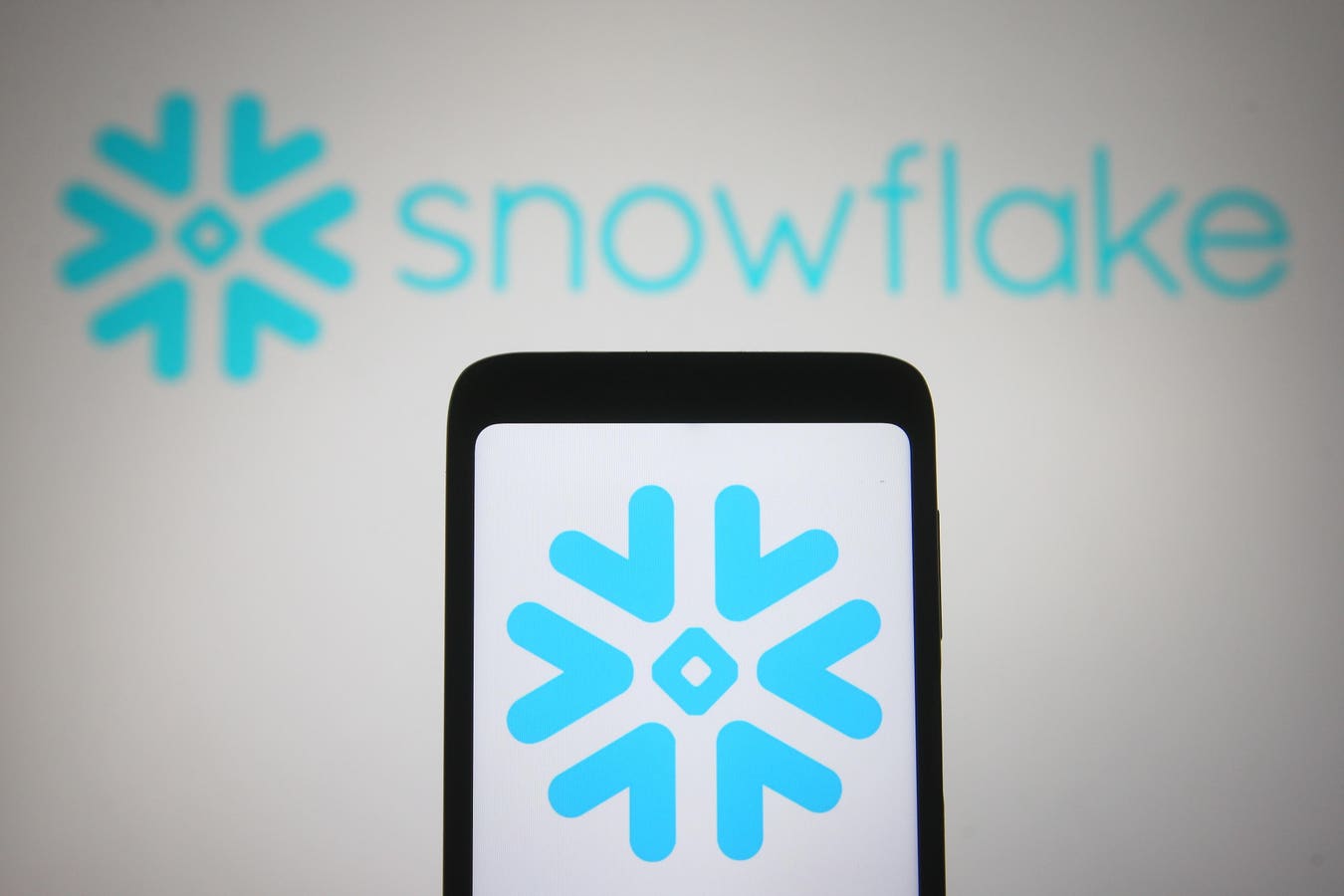Snowflake — a mobilizer of enterprise data through a company’s data cloud — exceeded investor expectations in its most recent financial report, according to MarketWatch.
While Snowflake’s shares closed December 5 at $186 a share — 52% below their November 2021 high — the company’s November 29 third quarter report seems to have boosted its stock price by 8%.
Will Snowflake continue to beat expectations? Based on my recent interviews with company executives, a Goldman Sachs analyst, and a Snowflake customer, Freddie Mac’s chief data officer, the data platform provider has several factors working in its favor, including:
- More spending on Snowflake’s services.
- High return on customer investment.
- Building new services to satisfy new customer needs.
Snowflake faces several risks — including competition from hyperscalers like AWS and others, the possible failure of its compliance procedures, and slower than expected migration to the cloud, according to Morningstar.
However, the company appears to be riding a cresting wave of demand and is well-positioned to capture a significant share.
Snowflake’s Third Quarter 2023 Performance and Prospects
Snowflake stock rose 7.6% after the company reported expectations-beating results on November 29.
Here are the key numbers from MarketWatch:
- Q3 product revenue: $698 million, up 34% and $19 million above analyst estimates.
- Q3 Adjusted earnings per share: 25 cents — up 127% and nine cents per share above estimates.
- Q3 net revenue retention rate: 135%.
- Q3 customers with over $1 million in revenue: 436.
- Q4 revenue guidance: a range between $716 million and $721 million — the midpoint of which is about $22.5 million more than estimates.
“These results reflect strong execution in a broadly stabilizing macro environment,” CEO Frank Slootman said in a release.
Snowflake enjoyed increased demand in the third quarter. In a December 4 interview, Slootman told me, “We grew revenue 34% in the latest quarter. The big takeaway to read into it is the markets have stabilized.”
He added. “Q4 22, Q1 23, and Q2 23 we saw disruption as people focused on rationalization and getting rid of stuff. We reset guidance base on our consumption model. The financial world does not love the consumption model on the way down. In Q3 we maintained our guidance. We see continued strength and raised our Q4 guidance.”
More Spending on Snowflake’s Services
Due to Snowflake’s consumption model — where customers pay for what they use, rather than a fixed per person monthly fee — the company’s revenues fluctuate with demand.
Despite push back from investors, Slootman sees the consumption model as the wave of the future. “The consumption model is positive for the entire sector,” Slootman said. He added “I was previously CEO of ServiceNow
NOW
Investors like the predictability of the traditional SaaS model but customers have mixed feelings about it. As he told me, “The consumption model is great for customers on the way down — since they do not pay for what they do not use. However, on the way up, they pay more to use more and they don’t like it.”
Earlier in 2023, customers were consuming less. Now they are increasing their spending. “We came out of a period of irrational exuberance during the pandemic. There was over caffeinated spending,” he said. “The bill came due and companies rationalized and optimized in reaction to the prior several years.”
By diversifying its customer base, Snowflake is less likely to experience such future fluctuation. “Over the last four or five years, our business was mostly digital natives,” Slootman told me. He added, “Since then we have layered in traditional companies — such as banks, manufacturers, health care, and retailers. We are more stable now. It won’t happen again.”
High Return On Customer Investment
Snowflake customers say they get value from the company’s products. I have previously written about how Goldman Sachs and State Street
STT
Freddie Mac is getting faster answers with Snowflake. On December 5, Aravind Jagannathan, Freddie Mac’s vice president — chief data officer told me, “In 2019 we wanted to move our data from on-premises to the cloud. We wanted to be quicker in providing insights from the data while reducing the risk of having multiple copies of our data moving back and forth.”
Freddie Mac picked Snowflake for its faster speed to market and better query performance. “A report that used to take until 3pm to deliver arrived at 8 am,” Jagannathan said. He added, “Processing that used to take 12 hours is now done in 35 minutes. A capital report that used to take many hours can be done in 10 minutes.”
Freddie Mac will take its time on using Generative AI. “We are being thoughtful about regulators and senior management,” he said. “Snowflake can support Generative AI. We are going to make sure we have the right data governance and have identified the right use cases.”
New Services To Satisfy New Customer Needs
The world changes fast and companies can only keep growing if they position themselves to take advantage of those changes in ways that benefit customers.
Snowflake’s technology has evolved in the direction of greater flexibility for customers. “We used to offer data warehousing for a very specific use case of making batch processing data available for analytics,” Slootman said.
He continued, “We have added many different kinds of workloads. Now we have a platform based on all kinds of live data. Now the work is going to the data. It is easy to inquire about what is happening now in the business. We are working towards enabling users to ask ‘What will happen next quarter? Why? Will it happen again? What should we do about it?’”
Generative AI will contribute to realizing Slootman’s vision for a forward-looking decision support system. According to my December 4 interview with Sridhar Ramaswamy, Snowflake’s senior vice president of AI, “Fidelity uses Snowflake as its platform of record for all data. If they want a global picture it cane be done easily with live data through Snowflake.” (Ramaswamy previously led Neeva, a search service powered by AI without advertisements, that Snowflake acquired in May 2023).
To that end, it sounds to me as though Snowflake is cautiously building a way for end-users to make natural language queries of their data. “2023 is the year of AI. First we have the ability to synthesize information in a fluid conversation through ChatGPT using Neeva,” Ramaswamy said.
Snowflake is developing this vision in stages. First, search can be done through frequently asked questions. Next, the company is offering CoPilot to make it easier for people to write SQL code to provide faster access to the data. “We are building out the capability to query data in real time,” he concluded.
Like Freddie Mac, Snowflake is not going to offer Generative AI until it is safe. “We are building business applications and we want it to be rock solid with no hallucinations,” Slootman said.
He added, “AI is bridging the gap between man and machine, We are working on the last mile. We will not launch until security and governance are sold and we can provide sources for the data. We will provide links to know where it came from. We will have auditability and verifiability.”
Where Will Snowflake Stock Go?
Snowflake could add significantly to the number of people who use its data if Generative AI works safely and effectively — which would increase the company’s revenue and presumably its stock price.
How much revenue will this add? “It is not there yet to quantify. It is bigger than a breadbox. It will become massive. It will pay for itself — for example in contact centers. It can run multiple workloads at the same time. A client told me, ‘People are getting drunk on Snowflake’.” Slootman concluded.
Goldman Sachs is bullish on Snowflake. According to my November 30 interview with Kash Rangan, Goldman Sachs Managing Director, “Snowflake is like a Ferrari — it is bigger, faster, and has more power. These days we are talking about analyzing so much more data — exabytes. Creating an architecture that runs in the cloud is essential for providing accurate analysis at scale.”
Snowflake create significant business value for customers. “Snowflake can help you compare three suppliers and identify which one delivers on time and at the lowest price,” he told me.
Rangan added, “An investment bank can run daily analysis to find out which customer is the most profitable, which equity and fixed income trades made the most money. It is really hard to get those answers fast. If you have to wait a week, the information is not actionable.”
Goldman sees Generative AI as an opportunity for Snowflake in two areas: data and training LLMs. Snowflake enables non-technical users to ask a question in plain English to get access to all that data.
For example, Rangan said, “You can ask: ‘My supply chain is gnarled up. How can I configure it so I can deliver what customers ordered in three days rather than seven?’.” He added “Snowflake uses SQL so before LLMs, only experts in SQL coding could tap into that valuable business data. Now anyone can access it.”
He thinks Snowflake has a bright future. “It has core technology, a great business model, an outstanding management team, and the ability to execute.”
Another analyst has a more mixed outlook. According to Morningstar — which set a price target of $231 for Snowflake, the bad news was less profitability than the analyst had expected; while revenue and the revenue forecast was better than anticipated.
Ultimately, Morningstar views Snowflake as well positioned to take advantage of the growth resulting from AI. However, the analyst is anticipating the investment required to satisfy the demand will cut into Snowflake’s profitability.
Read the full article here













Leave a Reply